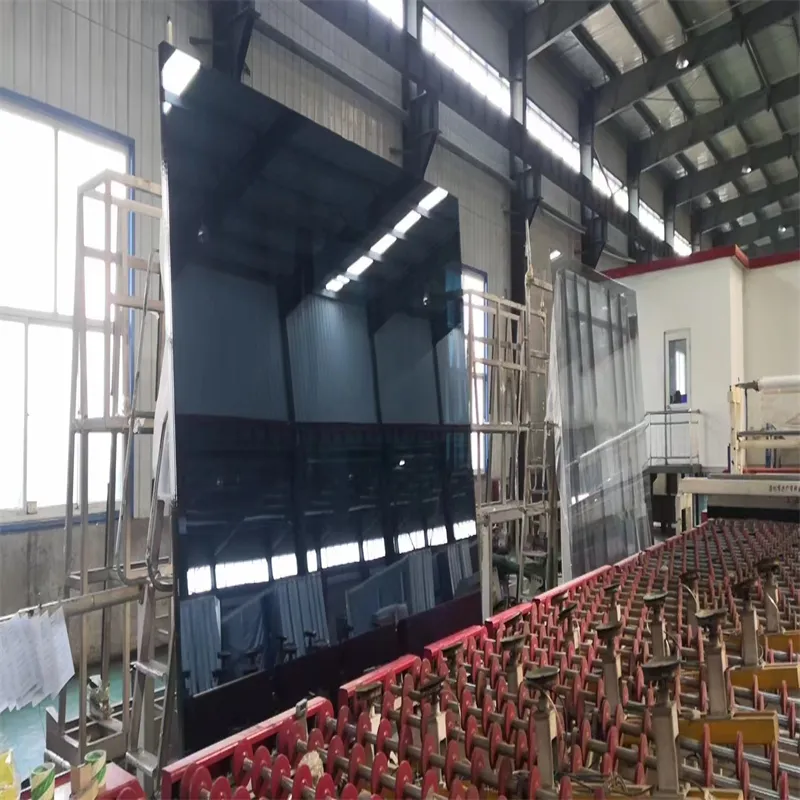Dec . 11, 2024 19:36 Back to list
Innovative Designs for Curved Safety Glass Applications in Modern Architecture and Interior Spaces
The Importance of Curved Safety Glass in Modern Architecture
In the ever-evolving landscape of architecture and design, the need for innovative materials that cater to aesthetic appeal, safety, and functionality has become paramount. Among such materials, curved safety glass has emerged as a significant player, offering a unique blend of beauty and practicality. With its versatility and strength, curved safety glass is revolutionizing the way architects envision their structures, providing not just a visual spectacle but also ensuring the safety of occupants.
Defining Curved Safety Glass
Curved safety glass is specially treated glass that is bent or curved without compromising its strength and durability. Typically made from tempered or laminated glass, which undergoes processes to enhance its resilience, curved safety glass is designed to withstand impacts and extreme weather conditions. This makes it an ideal choice for a variety of applications, from residential buildings to commercial structures and public installations.
The process of creating curved glass involves multiple stages. Initially, the glass is heated to a pliable state before being formed into the desired curvature. Once shaped, it undergoes further treatment to enhance its safety features. The end product not only meets strict safety regulations but also offers aesthetic advantages, as the curvatures can create seamless transitions and fluid lines in architectural designs.
Aesthetic Appeal
One of the primary reasons architects and designers favor curved safety glass is its ability to create stunning visual effects
. Curved surfaces can distort and manipulate light, providing unique reflections and enhancing the ambiance of a space. This characteristic allows for innovative design solutions, enabling architects to break away from traditional, rigid lines and embrace a more organic form.Moreover, curved glass can introduce a sense of openness and connectivity, blurring the boundaries between indoor and outdoor spaces. This is particularly beneficial in modern architecture, where the emphasis is placed on creating environments that are both functional and inviting. By using curved safety glass, architects can design structures that feel more spacious and integrated with their surroundings.
curved safety glass

Safety and Durability
While aesthetics are crucial, safety is undoubtedly a primary concern in any architectural design. Curved safety glass offers enhanced safety features, making it a reliable choice for public spaces, high-rise buildings, and other structures where the risk of breakage can pose serious dangers. The tempered glass can withstand significant impact forces, making it less likely to shatter upon collision. In the event of breakage, laminated glass holds the shards together, reducing the risk of injury.
In addition to its strength, curved safety glass is often treated to resist scratches, chemicals, and weathering. This durability minimizes the need for frequent replacements, ultimately lowering maintenance costs and ensuring that buildings retain their aesthetic appeal over time.
Applications in Architecture
Curved safety glass is increasingly being utilized in various architectural applications. Many contemporary buildings feature large glass facades that incorporate curved elements, creating visually striking structures. From office towers to museums, the use of curved glass can transform the ordinary into the extraordinary. Furthermore, in residential design, curved safety glass is often employed in elements such as balustrades, skylights, and windows, allowing homeowners to enjoy unobstructed views while maintaining safety.
Public spaces, including shopping centers, airports, and recreational facilities, also benefit from the integration of curved safety glass. The material contributes to creating an inviting atmosphere that encourages visitors to explore and enjoy their surroundings. Additionally, the energy-efficient properties of glass can enhance the sustainability of these structures, optimizing natural light while reducing the need for artificial lighting.
Conclusion
Curved safety glass serves as a testament to the intersection of beauty and functionality in modern architecture. Its aesthetic appeal, coupled with robust safety features, makes it an ideal choice for a diverse range of applications. As architects continue to push the boundaries of design, the role of curved safety glass will undoubtedly expand, leading to even more innovative and inspiring structures. By embracing this material, we pave the way for safer, more beautiful spaces that enrich our experiences and foster a deeper connection with our environment.
-
Safety and Style with Premium Laminated Glass Solutions
NewsJun.24,2025
-
Reinvents Security with Premium Wired Glass
NewsJun.24,2025
-
Premium Float Glass Line for Modern Architecture
NewsJun.24,2025
-
Low Emissivity Glass for Energy-Efficient Architecture
NewsJun.24,2025
-
High-Performance Insulated Glass Solutions for Modern Architecture
NewsJun.24,2025
-
Elevates Interior Style with Premium Silver Mirror
NewsJun.24,2025
Related PRODUCTS














